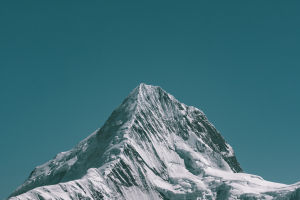The Large Aletsch Glacier
The world is big and full of wonders. Nature is even more magical and charming. The beautiful scenery created by illusion can make people spend their whole lives to pursue, slowly appreciate and savor it. Let we meet the beautiful natural landscapes around the world!
The Aletsch Glacieror Great Aletsch Glacier is the largest glacier in the Alps. It has a length of about 23 km (14 mi) (2014), has about a volume of 15.4 km3 (3.7 cu mi) (2011), and covers about 81.7 km2 (31.5 square miles) (2011) in the eastern Bernese Alps in the Swiss canton of Valais.The Aletsch Glacier is composed of four smaller glaciers converging at Konkordiaplatz, where its thickness was measured by the ETH to be still near 1 km (3,300 ft).It then continues towards the Rhône valley before giving birth to the Massa. The Aletsch Glacier is – like most glaciers in the world today – a retreating glacier. As of 2016, since 1980 it lost 1.3 kilometres (0.81 mi) of its length, since 1870 3.2 kilometres (2.0 mi), and lost also more than 300 metres (980 ft) of its thickness.
The whole area, including other glaciers is part of the Jungfrau-Aletsch Protected Area, which was declared a UNESCO World Heritage Site in 2001.
And not just because the "Large Aletsch Glacier", which carries an incredible 11 billion tons of ice, is the largest glacier of the Alps. The ice extends from the northern slopes of Eiger, Mönch and Jungfrau down towards the Valais. The water flows through the untamed Massa Gorge into the Rhone. The entire region is a habitat for many rare animal and plant species, for instance in the Aletsch Forest. The Pro Natura nature reserve is located close to the forest.
Innumerable vantage points offer a good view of the glacier, such as the Bettmerhorn above Bettmeralp. Eggishorn, which can also be reached via cable car from Fiesch via cable car, offers a magnificent view of the winding upper part of the large glacier. Lake Märjelen, which is fed by glacial meltwater, lies at a corner of the ice flow.
Incredibly immense, incredibly beautiful: the Large Aletsch Glacier is the Alps' mightiest ice flow. And the most popular, for it is easily accessible and is ideally situated for extensive hikes, winter sports and special nature excursions.
Interesting facts about the Great Aletsch Glacier:
If the ice giant were to melt, each citizen of the earth could be supplied with one litre of water a day for 3.5 years.
The Great Aletsch Glacier has its origin in the Jungfrau region near Konkordiaplatz
The Great Aletsch Glacier is formed by the confluence of three powerful firn streams. The Great Aletschfirn, the Jungfraufirn and the Ewigschneefeld.
The Great Aletsch Glacier has two medial moraines. These appear as dark lines along the entire length of the ice flow.
The medial moraine on the right in the direction of glacier flow is called Kranzbergmittelmoräne.
The medial moraine on the left in the direction of glacier flow is called the Trugberg medial moraine.


